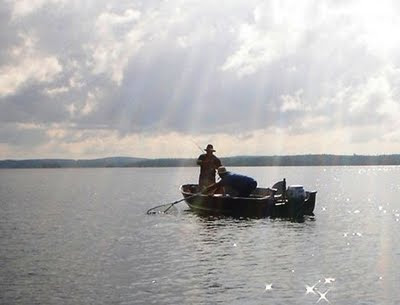
Walleye fishing the first couple of weeks of the season this year is going to come soon after ice-out it appears.
This begs the question: what techniques should anglers try when looking for ice-out walleye?
There are two main types of places to fish first thing in the spring: 1. where walleye have spawned and 2. where the lake warms the fastest.
In both instances the walleye will be very shallow, probably six feet or less. This usually means fishermen can do the best by either anchoring or drifting and using live bait or jigs with bait.
It is difficult to troll for fish in less than six feet of water and not scare them.
Usually the best rig is to use a 1/8-ounce jig with or without a 2 1/2-inch twister tail and tipped with either a piece of worm or a minnow. The water can be too cold for leeches to have much action at this time.
If you are new to camp we will mark on a map where the fish should be.
A lot of times the walleye will be right up next to the shore in as little as three feet of water.
These will be shorelines that are protected from the wind and which get full exposure to the sunlight. No doubt the fish are in these spots because that is where the food supply is. This can be water insects that are emerging from the mud as well as baitfish.
I would suggest anchoring or drifting in these places and pitching the jig to within a few feet of shore, let it sink to the bottom and then jig it back to the boat, all the while making sure the jig falls to the bottom on each motion.
Fish move around a great deal, of course, and the places we send you are just a starting point. Look for similar habitats in other locations and try those too.
Although you might not be able to get as many walleye by trolling, this method is very effective at finding a new spot. Many people front-troll floating Rapala-type stick baits, in 3-6-inch sizes, as close to shore as they can without hitting anything with the motor. Even if you scare off some fish, there will be others which will fill in behind the boat and strike the lure. You can then work the spot back and forth by trolling or even better, switch to jigs and live bait and drift or anchor once you've got a good idea where the fish are.
Spring walleye are usually very localized. They seem to go on feeding frenzies every couple of hours and don't seem to be as light-sensitive as they are later in the season.
Another difference between spring and summer fishing is the walleye may not be on the windy shore in the spring. Rather they can often be in the calm places where the water warms the fastest. However, if the weather is hot and sunny and the water warms rapidly, the windy shore can be the favorite in the spring too.
Click to go back to our website:
Click to see the latest on the blog:


No comments:
Post a Comment